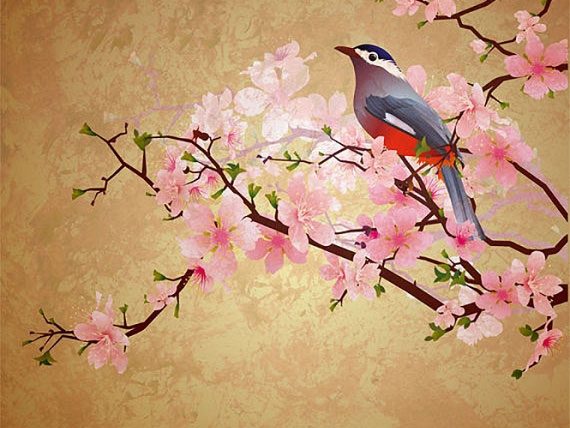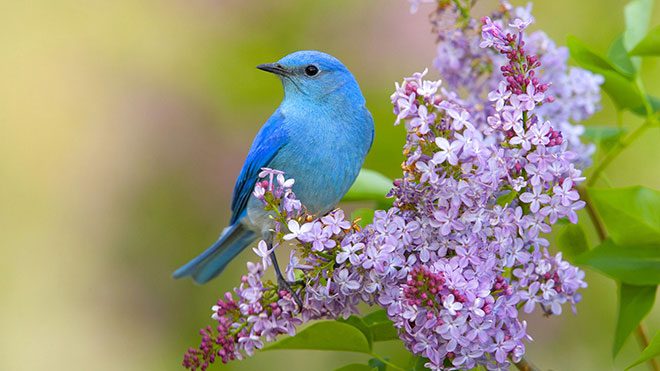According to Eastern viewpoints, the Spring Equinox marks the midpoint of spring.
Understanding the Spring Equinox
According to the ancient Chinese agricultural calendar, each year consists of 24 solar terms, corresponding to 24 moments when the heavens and earth transition. The Spring Equinox is one of these 24 solar terms. “Spring” refers to the season of spring among the four seasons: spring, summer, autumn, and winter; “equinox” means the exact middle. Thus, the Spring Equinox can simply be understood as the midpoint of spring in the Agricultural Calendar (Lunar Calendar).
The Spring Equinox is also considered a special day in the Western Gregorian calendar. However, unlike the Eastern perspective, where the Spring Equinox is seen as the midpoint of spring, in the West, it marks the beginning of spring in the Northern Hemisphere, the time when the Sun appears over the “equator” (the Sun is closest to the equator) and moves northward.
The Spring Equinox is the day when daytime and nighttime are equal in length at the equator. According to Western science, this day marks the start of spring in the Northern Hemisphere or the beginning of autumn in the Southern Hemisphere.
In the Southern Hemisphere, this day is referred to as the Autumn Equinox. On this day, the Sun rises exactly in the east and sets exactly in the west. Additionally, the Sun will be directly overhead at noon.
The Spring Equinox is celebrated as a festival in many parts of the world.
The Norouz festival (New Year or Spring Festival) in Iran is celebrated on this day. The Baha’i Faith refers to this celebration as Naw-Rúz. There is also the Ostara festival in Wicca, one of the eight Sabbats celebrated by modern pagans.
In Japan, the Spring Equinox (春分の日) is a national holiday for people to visit graves and reunite with family.
In Christian countries, Easter is celebrated on the first Sunday after the first full moon following the Spring Equinox.
During this time, the Lao New Year, the Thai New Year, and the Burmese New Year also begin to be celebrated in mid-April. Mid-March also marks the beginning of Nisan, the first month in the Jewish religious calendar. The Tamil New Year for South Indians is celebrated after the Spring Equinox, known as Tamil Nadu.
Earth Day has been celebrated annually on the Spring Equinox since its inception on March 21, 1970.
Experiencing the Spring Equinox Through Nature
Since the Earth’s axis is not vertical but tilted at 23 degrees to the plane of the ecliptic, certain areas receive more sunlight than others in the opposing hemisphere. During the two equinoxes each year, the Earth faces the Sun directly, resulting in equal lengths of day and night. However, because our planet is constantly in motion, this balance quickly dissipates.
It is easy to notice the warm weather, cool breezes, and the approaching heat of summer in the Northern Hemisphere. Additionally, if you live in the polar regions of the Northern Hemisphere, you will see the Sun rising on the horizon in the east in the coming weeks. Days will gradually become longer, temperatures will rise, and you won’t need to wear a coat anymore. You will observe the Sun’s path in the sky shifting northward throughout the day.

The Spring Equinox brings flourishing vegetation and wildlife.
The Spring Equinox signifies flourishing vegetation and wildlife, heralded by the sounds of spring thunder and the spring rains nourishing the fields. Temperatures rise and stabilize, dispelling the chill. An old saying goes, “At the Spring Equinox, sprouts awaken; a moment of frost is worth a thousand gold coins,” implying that this is the best time to sow seeds and prepare for harvest.
During the Spring Equinox, the most notable spiritual activity and ritual is the Qingming Festival, a time for grave visiting. On this spring day, descendants prepare offerings to visit and tidy their ancestors’ graves to show filial piety and timely repair any damage or deterioration.
In this solar term, the balance of yin and yang, harmonious weather, and the thriving of all living things create equal lengths of day and night, hence the name Spring Equinox, meaning dividing spring evenly. The ancients marked the period from the Beginning of Spring to the Beginning of Summer as spring, with the Spring Equinox being the peak of springtime.
The Spring Equinox is not only beneficial for agriculture and farming but also particularly auspicious for weddings, pregnancy, and childbirth, promising good fortune and tranquility. Therefore, astrological readings often recommend performing joyful activities during the Spring Equinox.
The Spring Equinox in Vietnam
The Spring Equinox in Vietnam is not particularly special. However, many places around the world celebrate this day as a festival. Easter in Christianity is celebrated on the first Sunday after the first full moon following the Spring Equinox. In Japan, the Spring Equinox (春分の日) is a national holiday for people to visit graves and reunite with family, followed by the Qingming Festival on April 4.

During the Spring Equinox, the Sun moves north; during the Autumn Equinox, it moves south. (illustrative image).
The equinox occurs twice a year, once in spring known as the Spring Equinox in March, and once in autumn known as the Autumn Equinox in September. During the Spring Equinox, the Sun moves north, while during the Autumn Equinox, the Sun moves south. The position of the Sun at the time of the Spring Equinox is used to determine the null point of both celestial longitude and latitude.
However, in reality, these observations are not entirely accurate due to a phenomenon known as the precession of the equinoxes. Over hundreds of years, the Earth’s axial rotation in space changes as it behaves like a gyroscope. This means that the positions of the equinoxes shift across the sky at a rate of 50 arc seconds per year.
Spring Equinox in Meteorology
When it is spring in the Northern Hemisphere, it is autumn in the Southern Hemisphere and vice versa. During the vernal equinox, day and night are roughly equal at twelve hours each, with increasing daylight and decreasing night length as the season progresses.
Subtropical and tropical regions are better described by different climatic types, such as dry or wet, monsoon or cyclone. Cultures may have local names for seasons that are less equivalent to terms derived from Europe.

Cultures may have local names for seasons that differ from European-derived terms. (illustrative image).
Meteorologists typically define four seasons in many climates: spring, summer, autumn, and winter. These are demarcated by the average temperature values on a monthly basis, with each season lasting three months.
The three warmest months are considered summer, the three coldest are winter, and the alternating months are spring and autumn. Spring, defined in this way, can start on different days in different regions.
Another name for the March full moon is the Sap Moon, as this is the time of year when maple sap begins to flow.
Thus, in the United States and the United Kingdom, the spring months are March, April, and May, while in New Zealand and Australia, spring typically begins on September 1 and ends on November 30.
Swedish meteorologists define the start of spring as the first occasion when the average daily temperature exceeds 0 degrees Celsius for seven consecutive days, thus the dates vary by latitude and altitude.
Variations in Concept Among Astronomers
In some Northern Hemisphere cultures, such as in Germany, the astronomical equinox occurring between March 19 and 21 is taken to mark the first day of spring, and the summer solstice around June 21 is considered the first day of summer.
In Persian culture, the first day of spring is the first day of the first month (called Farvardin), beginning on March 20 or 21. In other traditions, this day is chosen as the midpoint of spring.
In the traditional Chinese calendar, the seasons of “spring” (春) include days from the Beginning of Spring (March 5) to the Beginning of Summer (May 5), taking the Spring Equinox (March 20-22) as its midpoint, and concluding at Lixia (May 5-7).
Similarly, according to Celtic traditions, based on daylight and the strength of the noon sun, spring begins in early February and continues until early May.
The onset of spring is not always determined by fixed calendar dates.
Spring is associated with biological indicators, such as the blooming of various plant species, animal activities, and the distinctive smell of earth reaching temperatures conducive to microbial growth.
These indicators, along with the onset of spring, vary according to local climate and the specific weather of a given year. Most ecologists divide the year into six seasons without fixed dates.
In addition to spring, ecological calculations identify a prior season called prevernal (early or pre-spring) that separates winter from vernal (spring).
This is the time when only the hardiest flowers, like crocuses, are blooming, sometimes even while there are still a few snowflakes on the ground.
At the beginning of spring, the Earth’s axis is increasing its tilt toward the Sun, and the length of daylight is rapidly increasing for the corresponding hemisphere. The hemisphere begins to warm significantly, leading to the growth of new plants, which is how this season gets its name.
The Spring Equinox in 2024 falls on Wednesday, March 20, 2024.
The Spring Equinox 2024 occurs precisely at 10:06 AM.
During the Spring Equinox, the weather tends to be warmer, and there’s no need to wear a coat when going outside. However, this marks the transition between cold and warm climates. The elderly and children need to be especially cautious to avoid respiratory illnesses and ear, nose, and throat issues. Additionally, as we enter the Spring Equinox, the northern provinces of our country often experience humid conditions, so it’s advisable to equip your family with dehumidifiers, washer-dryers, clothes dryers, and essential oil diffusers to ensure daily activities are not affected.
| The Spring Equinox, Autumn Equinox, Summer Solstice, and Winter Solstice are four fundamental time markers. Although they are often considered a single day, that is not the case. In the 24 solar terms calendar, each name represents a solar term lasting 15 days, and what we refer to as the Spring Equinox today is merely the starting day of the Spring Equinox term (similar to the other terms). |


















































